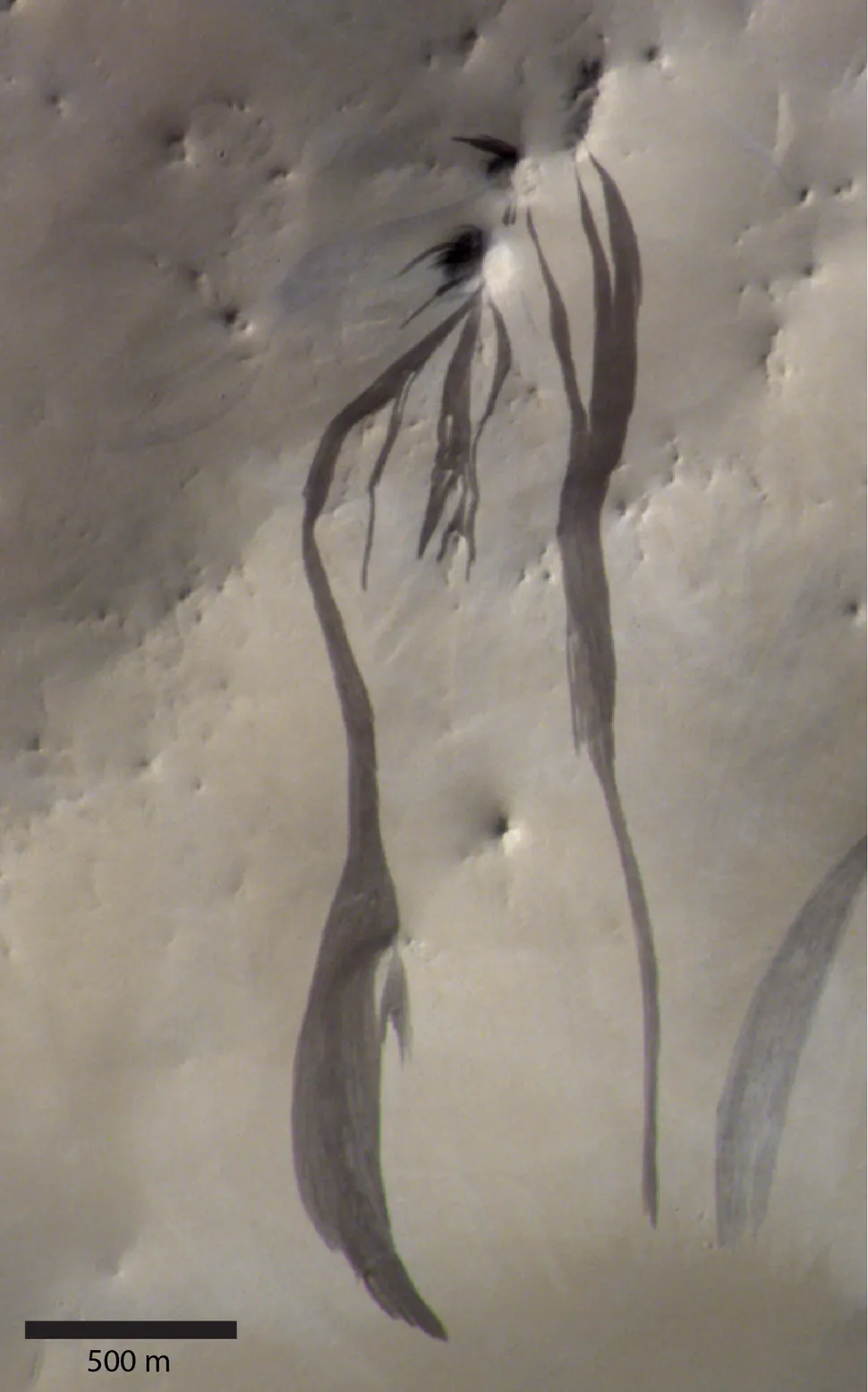First identified in the 1970s by NASA’s Viking mission, long, dark markings snake down Martian slopes, sometimes stretching across Mars’ surface for hundreds of feet. Scientists have watched some of these markings exist for decades, while others, known as “recurring slope lineae,” appear to fade in a single season. Nonetheless, they all starkly stand out against the planet’s dusty red surface.
Given that modern Mars is dry and arid, with temperatures rarely climbing above the freezing point of water, the origin of these streaks has long been a topic of heated debate. For years, they were seen as one of the most compelling signs that liquid water might still exist on Mars, suggesting a rare pocket of habitability on an otherwise arid planet. The leading theory speculated that salty water was seeping from underground sources — like buried ice or subsurface aquifers — allowing it to briefly flow across the cold Martian surface. But new evidence suggests something else might be driving the phenomenon.
“A big focus of Mars research is understanding modern-day processes on Mars — including the possibility of liquid water on the surface,” said Adomas Valantinas, a postdoctoral researcher at Brown University in a statement. “Our study reviewed these features but found no evidence of water. Our model favors dry formation processes.”
…..The geostatistical analysis revealed that slope streaks and recurring slope lineae don’t appear in places where you’d expect to find signs of liquid water or frost. For instance, watery slopes would be expected to face a specific direction, experience extreme temperature swings, or exist in high humidity. Instead, the study found that these streaky features are more common in areas with stronger winds and heavier dust activity.
The researchers say this points to the streaks forming when thin layers of fine dust slide down a steep hillside.
